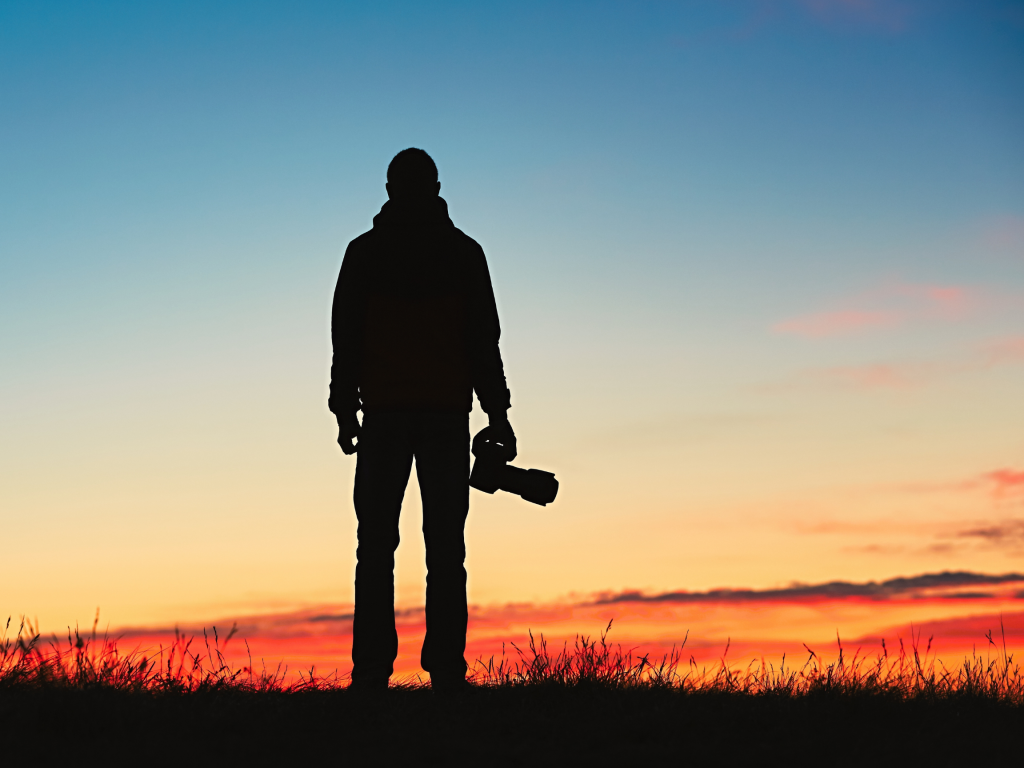Photography is a hobby that anyone can enjoy. Photography allows you to capture the moment, create your vision, and share what you see with the world. Keep reading if you’ve ever wondered how to take better photos or improve your photography skills!
What Makes a Photograph incredible?
It is not just an image that will capture your attention, but the story behind it—the moment’s emotion, that inescapable feeling that you’re part of something special. You might think this is something only great photographers can achieve; however, every person with a camera has it within them to create amazing images. With some fundamental knowledge and practice at home shooting different subjects, you too can start capturing those incredible moments and telling unique stories with your photography.
How to create incredible photographs?
When taking pictures, these are some of the most important things to remember:
- Use a tripod or other steady, stable surface. If you don’t have one available, try to find an area where the camera can rest on something that won’t move while you take your shot.
- Set your camera on a tripod or other steady, stable surface. The goal is for your hands (and thus their corresponding movements) to not be visible in the photo!
- Use the lowest ISO setting available because this will help reduce noise in your photos as well as give you better quality images overall

A picture is worth more than a thousand words. It’s one of the most well-known sayings in history and remains as accurate as ever. A single photograph can tell a story better than any book or article ever could. Not only does it allow you to capture moments in time, but also feelings and emotions.
The ability to truly capture a moment has always been one of photography’s greatest strengths, whether that moment is meant for entertainment or otherwise (and sometimes both). A photograph will never change its meaning based on context: whether it was taken during World War II or at your local community festival – if handled properly, the image will always be interpreted in the same way by every viewer who sees it.
Capturing the Perfect Moment
Capturing the perfect moment is an essential part of taking great photos. You can’t rely on luck and hope to capture that one moment in time when everything comes together perfectly, so it’s essential to be prepared for it.
Being ready at all times is crucial. It would help if you always carry your camera with you as much as possible so that when something interesting happens, you’re ready for it. This means having your equipment ready and loaded with film before leaving home or going out into the world to capture anything worth recording on camera at any time or night (or even during the day).
The Importance of Lighting
Regarding photography, your camera is only as good as your light. While many factors can come into play and affect the quality of your photos—from aperture to ISO settings—the most important thing you can do is ensure that you have a sufficient amount of light.
Lighting is what gives a photograph its mood and character, so you must use natural or artificial illumination in a way that makes sense for the image you want to create. Natural lighting can be great if windows are nearby (you may even consider shooting with window-light). Still, artificial sources, including flashlights and lamps, should be used if none are available.
It’s not always possible to capture fantastic images without proper lighting—even pro photographers need ample illumination when shooting outdoors at night or indoors with limited natural light sources—but by ensuring that you have some additional lighting source on hand when necessary, like an LED flashlight or portable lamp, then all sorts of exciting opportunities will become available for artistic expression!
The Right Equipment
A digital camera with interchangeable lenses is the best way to capture your subject in all its glory. You may have heard you can use a smartphone, but I wouldn’t recommend it unless you know what you’re doing. Phones have tiny sensors that don’t perform well in low light or extreme conditions. The results will never be as good as those from a DSLR (digital single-lens reflex) camera with interchangeable lenses (more on later).
A prime lens or zoom lens? When choosing your equipment, the first thing to consider is whether you want a prime lens or zoom lens—the former stays at one specific length. At the same time, the latter has multiple focal lengths, so you can change them depending on how far away your subject matter is. Primes are great for portraits because they allow for more creativity, but zooms are better for getting different perspectives on nature scenes and cityscapes. If possible, try out both types before making any purchases!
Shooting in Natural Light vs. Artificial Light
Like in this example, you can use artificial light to create shadows.
It’s important to note that natural light is more consistent than artificial light, and it’s also cheaper because you don’t have to pay for electricity. Many professional photographers use natural light because it is more flexible and easier to work with on location.
Set your camera on a tripod or other steady, stable surface
The first thing you need to do is make sure your tripod is as stable as possible. You don’t want a jittery shot because the camera was unsteady. The best way to do this is by using a remote shutter release and setting up a self-timer or even using a smartphone app like Snap seed or Instagram’s Hyper lapse (if you’re not using an iPhone).
Use the lowest ISO setting available
The ISO setting on your camera determines how sensitive it is to light. A higher ISO will result in a brighter picture, but at the cost of more noise.
The lower your camera’s ISO settings are (the smaller the number), the better your images will look—especially if you’re shooting in low-light conditions. It’s also important to know that higher ISOs produce more grainy and noisy images, which isn’t something you want!
Use the smallest aperture possible for your lens (f/16 or higher)
The larger the aperture, the less field depth you will have. The smaller the gap, the more depth of field you will have.
The larger the aperture is, the more light you let in. The smaller the gap, the less light you let in.
The smaller your lens’s maximum aperture (f/2-f/4, for example), it becomes harder to create a shallow depth of field (blurring out background objects).
Lock in your focus
- The first step to taking great photographs is ensuring your camera’s focus is locked on the subject. You can do this in a few different ways:
Use manual focus — Focus manually with the lens or use an app, like ProShot, which allows you to set autofocus points around the frame and lock that focus in place. - Use a tripod — Because tripods give you completely still shots, it’s easy for your camera’s AF system to focus on what you want, too—a massive benefit over shooting handheld!
- Use a remote shutter release — A remote shutter release (or self-timer) will also prevent unwanted blurriness from shaking hands during image capture. This works exceptionally well when photographing landscapes or scenes without people in them since there won’t be any moving objects in your frame (like cars driving by).
- Get closer — When photographing landscapes or cityscapes with buildings, getting closer can help eliminate potential distractions in your photos like traffic lights, car headlights, and street signs while bringing more detail into view at once.”
Take a meter reading to get a good exposure
You can take a meter reading to get a good exposure. The camera’s built-in light meter is calibrated to measure the average brightness it sees in the scene. It then compares these readings with an incident light meter, which measures only the light falling on your subject and nothing else. If you don’t have an incident light meter available, point your camera at your subject while looking through its viewfinder to point directly into the sun and record what you see on the rear LCD or live view screen. This will give you a reasonable idea of how much additional exposure compensation may be needed for the image not to be underexposed or overexposed.
If the image is too dark or too light, bracket your shots by adjusting your exposure by one stop and taking several pictures
Bracketing is a technique to capture a range of exposures in a single image. This method helps capture images of subjects that are difficult to expose correctly, especially when shooting in an environment with many variables. For example, if you want to take photos at night but there’s too much light pollution, bracketing will allow you to get the right amount of light without waiting until sunrise.
Conclusion
We hope this article helped you understand some of the most impcriticalpects of creating incredible photographs and how they can be applied to your work. It’s not always easy to get those perfect shots, but with the right equipment and knowledge, we believe anyone can do it!
